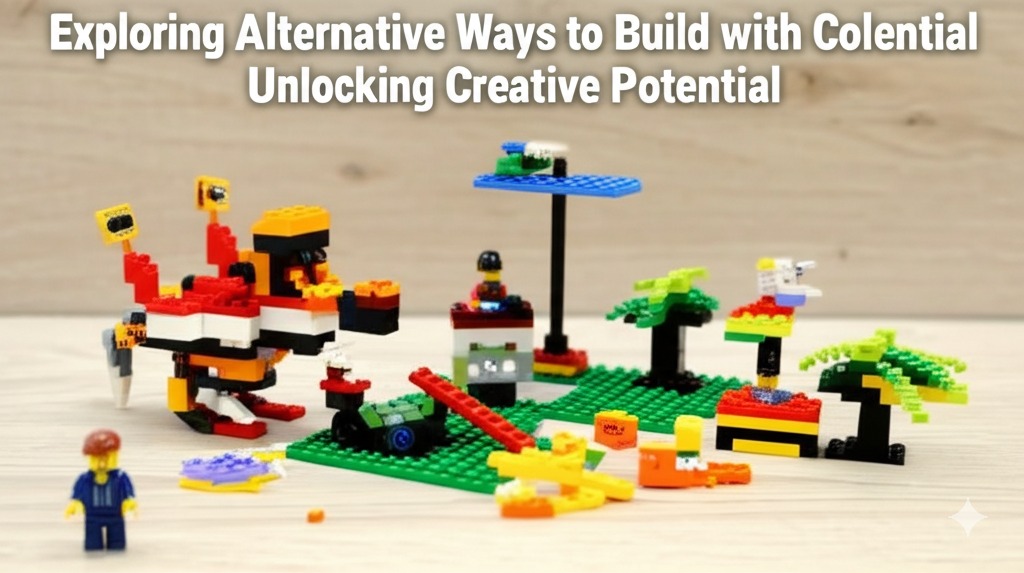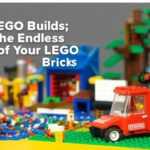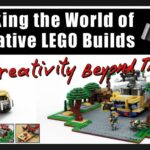LEGO has long been a staple of childhood creativity, with its iconic blocks offering endless possibilities for imagination. However, as you grow older or seek new challenges, traditional building might not always suffice. That’s where alternative ways to build with LEGO come into play. Whether you’re a seasoned builder or a newcomer, exploring unconventional techniques can open up a world of creative opportunities.
In this article, we’ll explore some exciting and unique approaches to LEGO building that will push your creativity to new heights. From using unconventional pieces to integrating different building techniques, these alternatives will take your LEGO creations to the next level.
What is Alternative LEGO Building?
Alternative LEGO building refers to the practice of using non-traditional methods, techniques, or elements to create something unique. This can range from building with LEGO pieces in ways that go beyond standard instructions to experimenting with unusual materials or even combining LEGO with other creative mediums.
Why Consider Alternative LEGO Building?
While traditional LEGO sets and instructions are fantastic for honing basic skills, exploring alternative building styles can offer several benefits:
- Enhanced Creativity: Pushing the boundaries of conventional LEGO building allows for more original designs and personal expressions.
- Problem-Solving Skills: When you’re not following instructions, you’ll need to think critically and solve challenges creatively.
- Customization: Alternative building methods enable you to tailor designs in ways that traditional sets don’t allow.
Techniques for Alternative LEGO Builds
1. Mixed Medium Creations
One of the most exciting ways to build with LEGO is by integrating it with other materials. Here are a few ideas:
- 3D Printing: Combine LEGO bricks with 3D printed elements to create structures that can’t be made with bricks alone.
- Natural Materials: Incorporate wood, metal, or fabric into your builds for an added texture contrast that LEGO alone can’t provide.
- Electronic Components: Add motors, lights, or sensors to your LEGO creations for interactive models.
By merging LEGO with different materials, you can create dynamic, multifunctional builds that stand out from the usual block-based designs.
2. Freeform Building
Instead of relying on instructions or set designs, try freeform building. This method involves constructing without predefined plans, allowing you to build purely based on your imagination. Here are some tips for freeform building:
- Start with a Base: Even if you’re building freeform, start with a solid base for stability.
- Use Symmetry and Asymmetry: Play around with both symmetrical and asymmetrical designs to challenge your skills.
- Take Breaks: Freeform building can be intense. Step away from the build to gain fresh perspectives and new ideas.
Freeform building is perfect for those who want to go beyond the limitations of pre-designed kits and explore a whole new creative realm.
3. Themed Builds
Creating LEGO designs based on specific themes or concepts is another fun way to experiment. You could try:
- Historical Periods: Build structures from different eras, such as ancient Rome, medieval castles, or futuristic cities.
- Fantasy Worlds: Recreate scenes from your favorite books, movies, or games, using LEGO pieces to bring them to life.
- Abstract Art: Dive into the world of abstract art by using LEGO bricks to create non-representational designs that focus on color, form, and structure.
Themed builds can inspire fresh perspectives and challenge you to think differently about how to use LEGO.
4. Modular Building
Modular building allows you to create a large structure by designing it in smaller, self-contained sections. Each module can be independently designed and assembled, then connected to form the final piece. This technique is ideal for complex projects like cities, landscapes, or multi-story buildings. Some tips include:
- Keep Proportions in Mind: While each module is independent, make sure they fit together seamlessly in terms of scale and structure.
- Use Interlocking Pieces: Plan your modules with interlocking parts that will hold together when combined.
- Experiment with Different Layouts: Try various configurations before committing to a final design.
Modular builds not only enhance creativity but also make large projects more manageable and flexible.
5. LEGO Sculpture
If you’ve always admired larger-than-life art pieces, why not try building a LEGO sculpture? This involves designing and constructing intricate, often large-scale representations of real-world objects, animals, or abstract art.
- Consider Scale: Larger sculptures require more planning, so work out the size of each section and plan accordingly.
- Use Techniques Like SNOT (Studs Not On Top): This allows you to build at different angles and create smoother surfaces for your sculptures.
- Add Detail: LEGO sculptures benefit from intricate details. Use smaller LEGO pieces to refine features, adding a sense of realism or texture.
LEGO sculpture is an art form that takes time and patience but results in impressive, visually stunning builds.
Alternative LEGO Communities and Resources
Online Communities and Platforms
Joining alternative LEGO communities can offer support, inspiration, and resources for your builds. Some great platforms include:
- LEGO Ideas: A site where LEGO fans can submit ideas for new sets, often bringing fresh, creative builds into the spotlight.
- Reddit: Subreddits like r/lego or r/legobuilding provide a space to share alternative builds, get feedback, and discover new techniques.
- YouTube and Instagram: Many builders share their alternative LEGO projects on these platforms, offering tutorials and build breakdowns.
Books and Tutorials
Numerous books and online tutorials explore unconventional LEGO techniques. Resources such as “The LEGO Architect” or “The LEGO MINDSTORMS EV3 Discovery Book” can provide step-by-step instructions and ideas for alternative builds.
Conclusion: Start Building Beyond the Blocks
Alternative LEGO building isn’t just about breaking the rules—it’s about expanding the possibilities of what you can create. Whether you’re mixing materials, freeform building, or diving into modular designs, these techniques will push your creativity and problem-solving skills to new levels. So, what are you waiting for? Grab your bricks, step outside the traditional instructions, and start exploring the vast potential of alternative LEGO building.

Yara Bryant is a contributing writer at Oxford Brick Art, where she shares her passion for LEGO creativity, design, and storytelling. With a keen eye for detail and a love for brick-based artistry, Yara explores the endless possibilities of LEGO, inspiring builders of all levels to think outside the brick.



